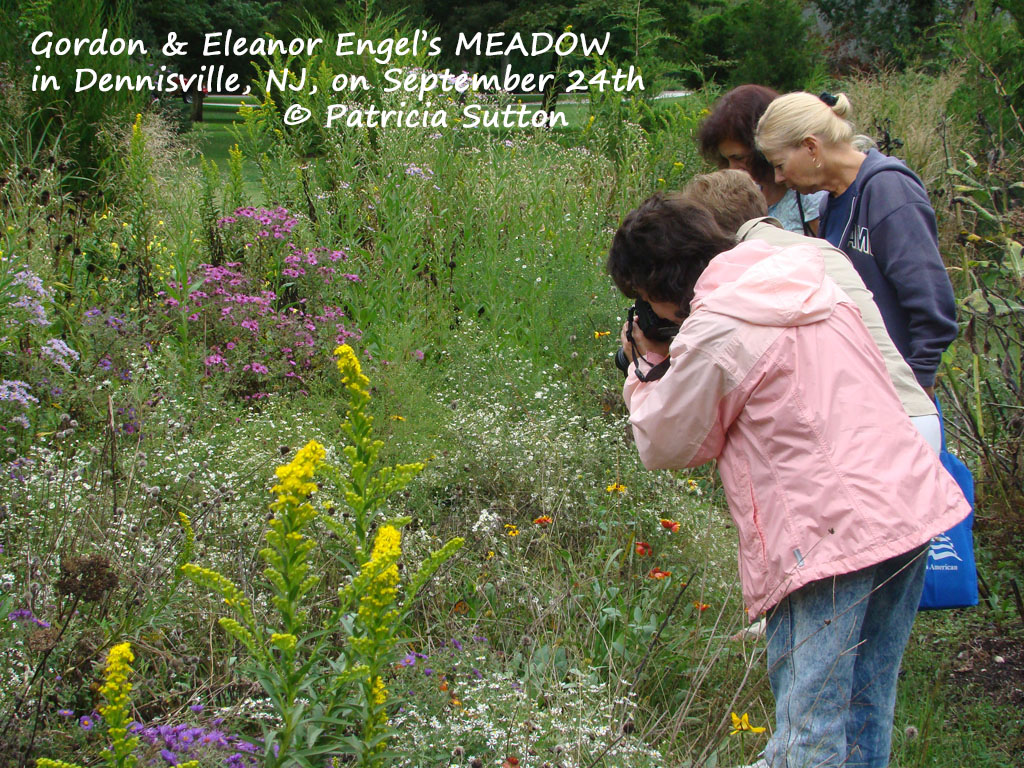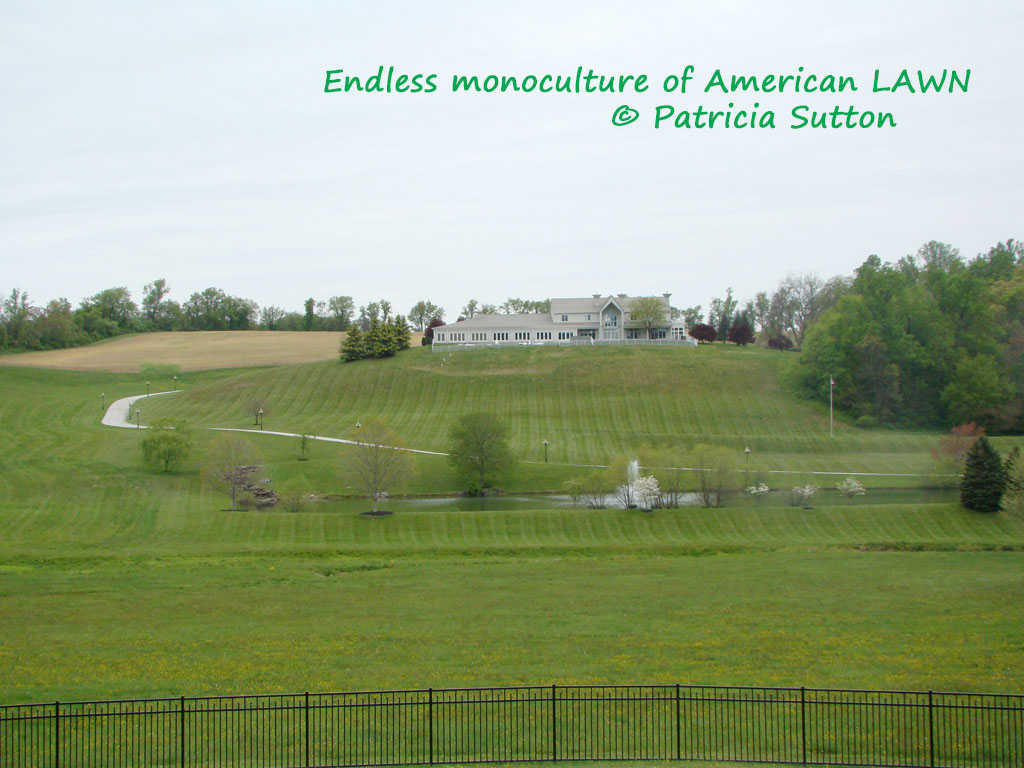 Americans have a love affair with the American Lawn! This unnatural habitat is labor intensive to maintain, hard on the environment (i.e. isn’t green in the true sense of the word), and it benefits little.
Americans have a love affair with the American Lawn! This unnatural habitat is labor intensive to maintain, hard on the environment (i.e. isn’t green in the true sense of the word), and it benefits little.
 Consider creating a meadow instead! But, what is a meadow? It may be easier to define what a meadow is NOT: it’s not sterile, it’s not a monoculture; it’s not “needy” of fertilizer, water, weekly mowings, and other pamperings, all of which contribute to greenhouse gasses.
Consider creating a meadow instead! But, what is a meadow? It may be easier to define what a meadow is NOT: it’s not sterile, it’s not a monoculture; it’s not “needy” of fertilizer, water, weekly mowings, and other pamperings, all of which contribute to greenhouse gasses.
A meadow is a mixture of grasses and wildflowers growing in a sunny, open area. A meadow is a riot of color. It’s diverse, full of many different plants, with as many as 7 different plants (or more) in a 1 foot square – in other words much more intense than your perennial garden. Meadow plants require no water (as opposed to lawns) – except, of course, when seeds, plugs, or plants are first planted.
 Meadow plants prefer and can thrive in sterile soils. Meadows are nonpolluting; they do not need weekly chemicals of fertilizers and herbicides. And meadows require no weekly mowing, as opposed to lawns.
Meadow plants prefer and can thrive in sterile soils. Meadows are nonpolluting; they do not need weekly chemicals of fertilizers and herbicides. And meadows require no weekly mowing, as opposed to lawns.
Most meadows result from neglect – a time of transition – when a farmer no longer farms, or a lawn is no longer cut, or cattle are no longer grazed there. Meadows are a transitional stage that eventually will be invaded and replaced by shrubs and trees, if not maintained or managed. To keep a meadow a meadow, it does need to be mowed once a year. And the best time to mow your meadow, if you are also trying to support and benefit wildlife, is in late February or early March. This annual mowing prevents tree and shrub seedings (planted by birds or windblown) from surviving and thriving and eventually turning your meadow into a forest.
So, what do you say? Are you ready to LOSE THE LAWN (or part of your lawn) & CREATE A WILDFLOWER MEADOW INSTEAD? If so, you’ll learn a whole lot more by reading my handouts on this topic, found below (CLICK on underlined text to download Pat’s pdf document).
Pat Sutton’s MEADOW Handout (part 1: pages 1-4) — Updated May 2024
Pat Sutton’s MEADOW Handout (part 2: pages 5-6)
Of course you want to select native plants for your meadow, so be sure to also read my post (and associated handout) on GARDENING FOR POLLINATORS, which includes tons more helpful information and resources!
